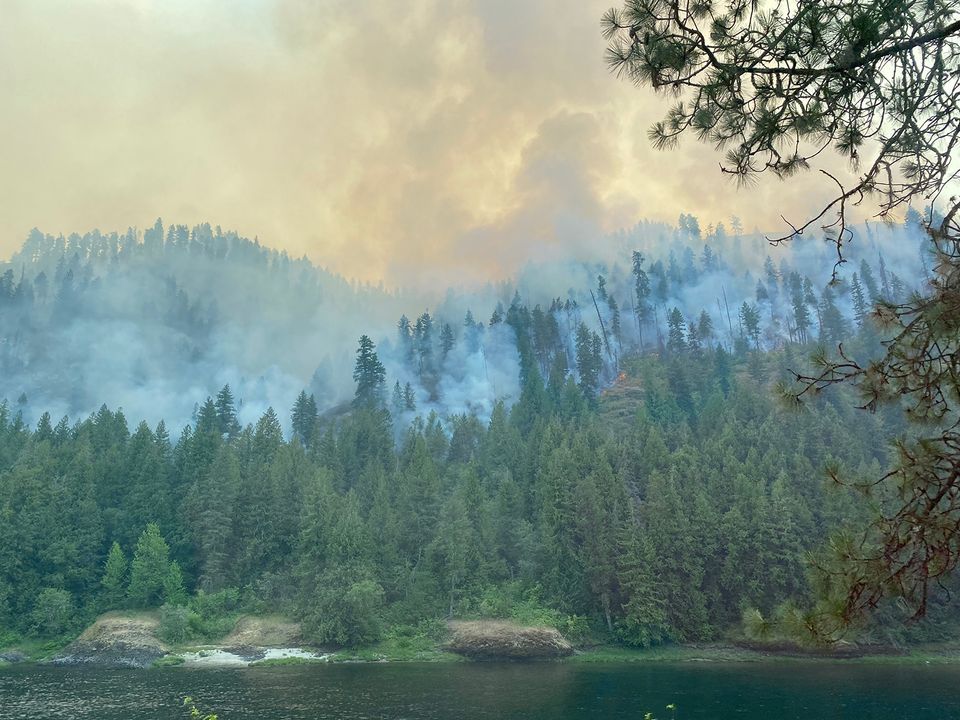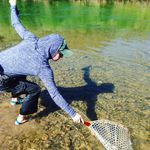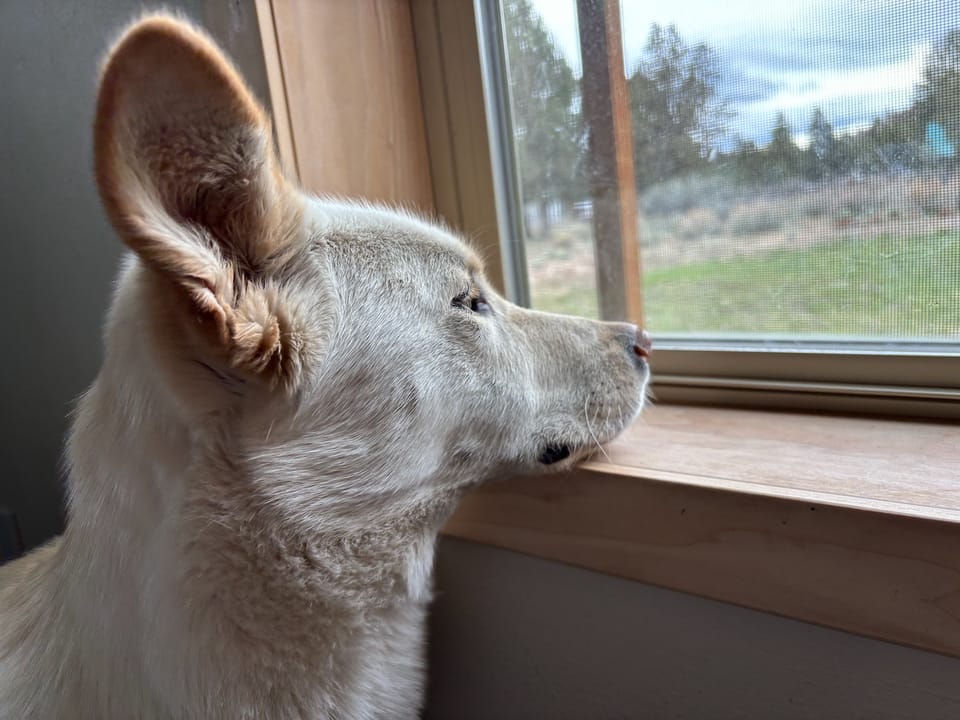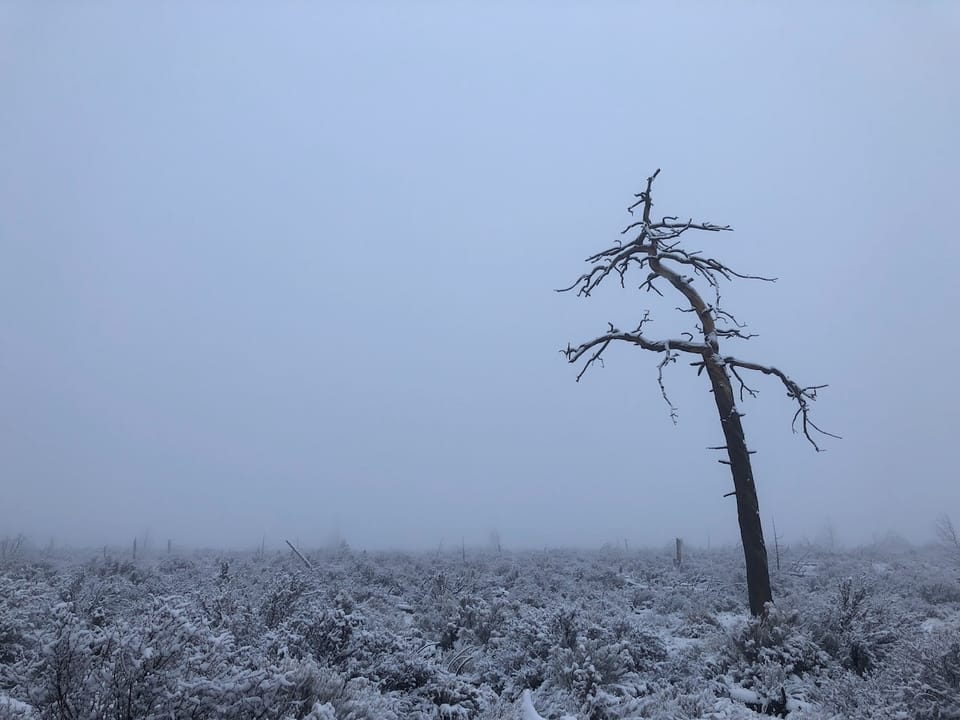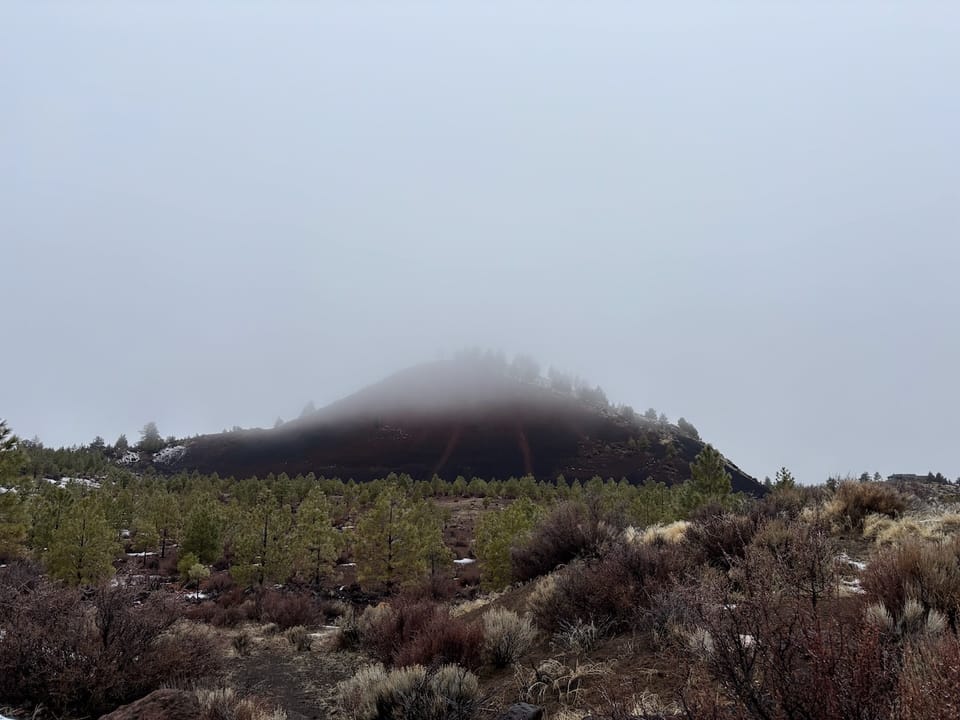We knew there would be wildfires. With no rain in weeks, the drought monitor’s maroon swath indicating exceptional drought kept growing and spreading across the West. Fishing restrictions were in place due to overly warm water temperatures. But we headed out for a two-week road trip, nonetheless, because sometimes adventure is better than staying home, even if the air might suck.
I consider myself an enthusiastic amateur when it comes to stalking air quality, smoke reports, weather, and wildfires. There is no one place to find the information you need, especially if you are crossing state boundaries, so you have to want to know. I had a pretty good handle on what was happening in Oregon when we drove out of cell phone range and set up camp thirty-some miles up a twisting canyon, next to a sparkling cold river on a road that ended at the wilderness boundary a few miles away. By evening we smelled smoke. The peaks above us began to fade as the sky went from blue to light gray. If rangers evacuated the canyon, would they think to look for people beyond the campgrounds, tucked in on faint dirt tracks, where the sound of the river drowned out any road noise?
There were no helicopters, airplanes, or bits of ash in the sky, but after one night the thought of being trapped in a canyon with wildfire nearby took the edge off the fun and we headed down to a new camp where the road went to more than one place and the creek was gentle background noise. We didn’t need to worry, the fire was in Idaho, only a few miles away, but trapped at the border by the Snake River.
Our destination was Montana and you have to go through Idaho to get there. We drove through miles and miles of smoke, towns with firefighter tent camps and signs thanking the firefighters. In the moments we had cell coverage I would research as quickly as I could to check our route for new fires and AQI numbers before coverage was gone again. When we stopped, it was hot, the heat dome in full effect. Even shaded parking spots felt too hot to leave the dogs, and so we kept on driving and blowing cold, recycled air into the truck to keep Mack, the mountain dog, from panting. Most of the route threaded through river canyons, some with warnings of heavy smoke and actual flames dancing through trees across the not-especially-wide river.
Montana was also on fire, of course. And being east of Idaho, also party to its smoke. The mornings were heavy with haze that lightened as the air warmed. The sun remained orange but sometimes the sky seemed a little blue, and we felt buoyed with optimism. I ran, but only a little, trying to spare my lungs. We drank beer. We fished and watched helicopters fly by with impossibly small bundles of water. Driving back west meant returning through Idaho, a different route, now with road closures. With only occasional cell service, we consulted atlases and wove a route over the Continental Divide, past cowboys, bulls, and Mad Max-style trucks. The smoke was relentless, but the rivers were beautiful. The mountains, when they showed themselves, were grand and inspiring.

Through some miracle of wind direction and geography, we returned home to clean air, despite a 400,000+ acre wildfire raging a couple of hours to the south and several other fires even closer. On our second day home, we were making dinner when we spotted a telltale white plume against the blue sky. A fire in the forest to the south, maybe three miles away. Neighbors began texting and gathering in the street and we watched airplane tankers and helicopters circle in and out of the white column, red clouds boiling out from the base as they dropped retardant. Being close to town, our fire was a priority — dozers and work crews contained it completely within a few days. With a steady gentle wind from the north we barely even smelled it. And the hot days continued, cloudless blue skies above and increasing dust under our feet.

Last Monday was a rare cloudy day in Central Oregon. We ran in the morning, up a sandy social track that winds through bitterbrush and lava rocks, and rain sprinkled down for 10 to 15 minutes, just enough to almost wet the trail from edge to edge. How long does it take to form a raindrop? As the clouds moved from the south to the north, gathering moisture and air and weight, they traversed the burning landscape and dropped down water that smelled like smoke.


